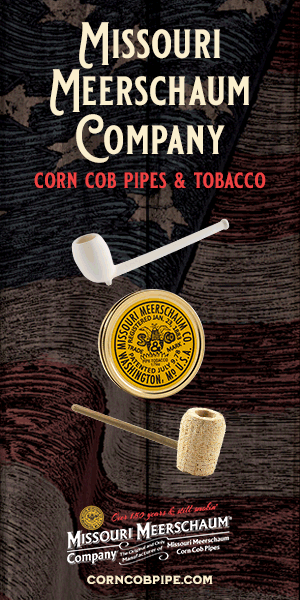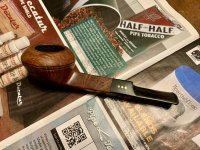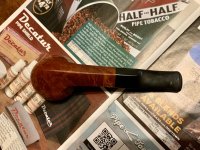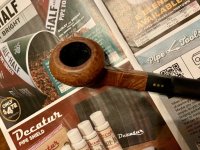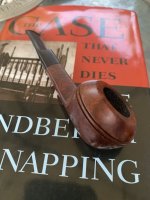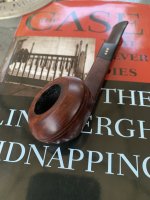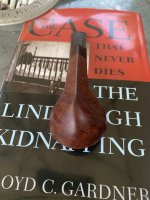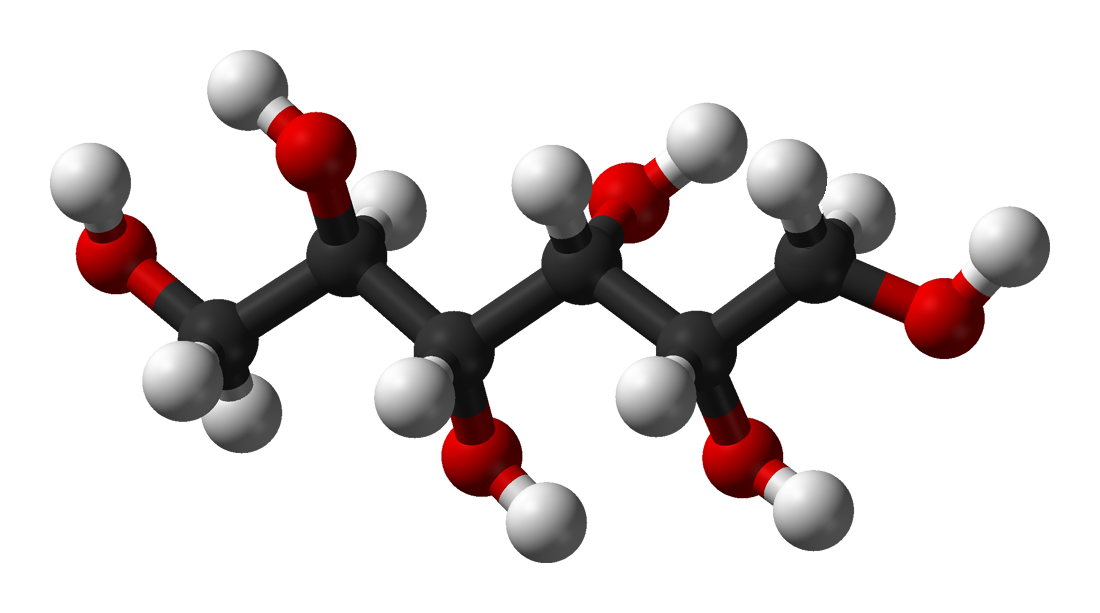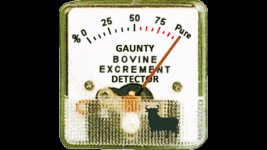Today I got in a very nice Lee Three Star large squat bulldog that seems to be unstained and natural briar.
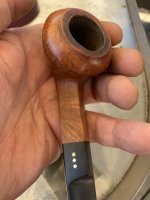
I was able with Everclear and steel wool to clean it up to like new.
After four smokes, I’ve got another incredibly good smoking $25 Lee pipe for certain, plus I’ve noticed something I’ve not previously thought much about.
In the cool of a fall evening, enjoying a good book, I’m sitting here thinking about how, a briar pipe colors.
Steel wool cleaning left this pipe bland, bald and plain looking.
Four smokes have returned the pipe to a highly figured, contrasting grained thing of beauty.
I’ve smoked it with clean, dry hands on my deck, and the only way I can figure that my sanded smooth and plain pipe is now gloriously figured again is that briar must be porous enough for oils in the tobacco to permeate the briar and color it, the same way water applied to a blank board temporarily shows the grain until it evaporates.
The ember inside a pipe reaches nearly a thousand degrees. Yet fractions of an inch away the pipe is cool enough to hold it.
The capillaries (or pores) of the briar structure are only atoms in diameter.
But once they carried water, and now carry hot steam and the oils from burning tobacco and that subtly colors the briar.
Use the pipe enough and they’ll go rancid and the pipe won’t be good anymore, but that’s a very, very long process.
If you’ll sit and think enough, sometimes a man gets an epiphany.
But usually, it’s just boredom, that causes sitting and thinking.

I was able with Everclear and steel wool to clean it up to like new.
After four smokes, I’ve got another incredibly good smoking $25 Lee pipe for certain, plus I’ve noticed something I’ve not previously thought much about.
In the cool of a fall evening, enjoying a good book, I’m sitting here thinking about how, a briar pipe colors.
Steel wool cleaning left this pipe bland, bald and plain looking.
Four smokes have returned the pipe to a highly figured, contrasting grained thing of beauty.
I’ve smoked it with clean, dry hands on my deck, and the only way I can figure that my sanded smooth and plain pipe is now gloriously figured again is that briar must be porous enough for oils in the tobacco to permeate the briar and color it, the same way water applied to a blank board temporarily shows the grain until it evaporates.
The ember inside a pipe reaches nearly a thousand degrees. Yet fractions of an inch away the pipe is cool enough to hold it.
The capillaries (or pores) of the briar structure are only atoms in diameter.
But once they carried water, and now carry hot steam and the oils from burning tobacco and that subtly colors the briar.
Use the pipe enough and they’ll go rancid and the pipe won’t be good anymore, but that’s a very, very long process.
If you’ll sit and think enough, sometimes a man gets an epiphany.
But usually, it’s just boredom, that causes sitting and thinking.




